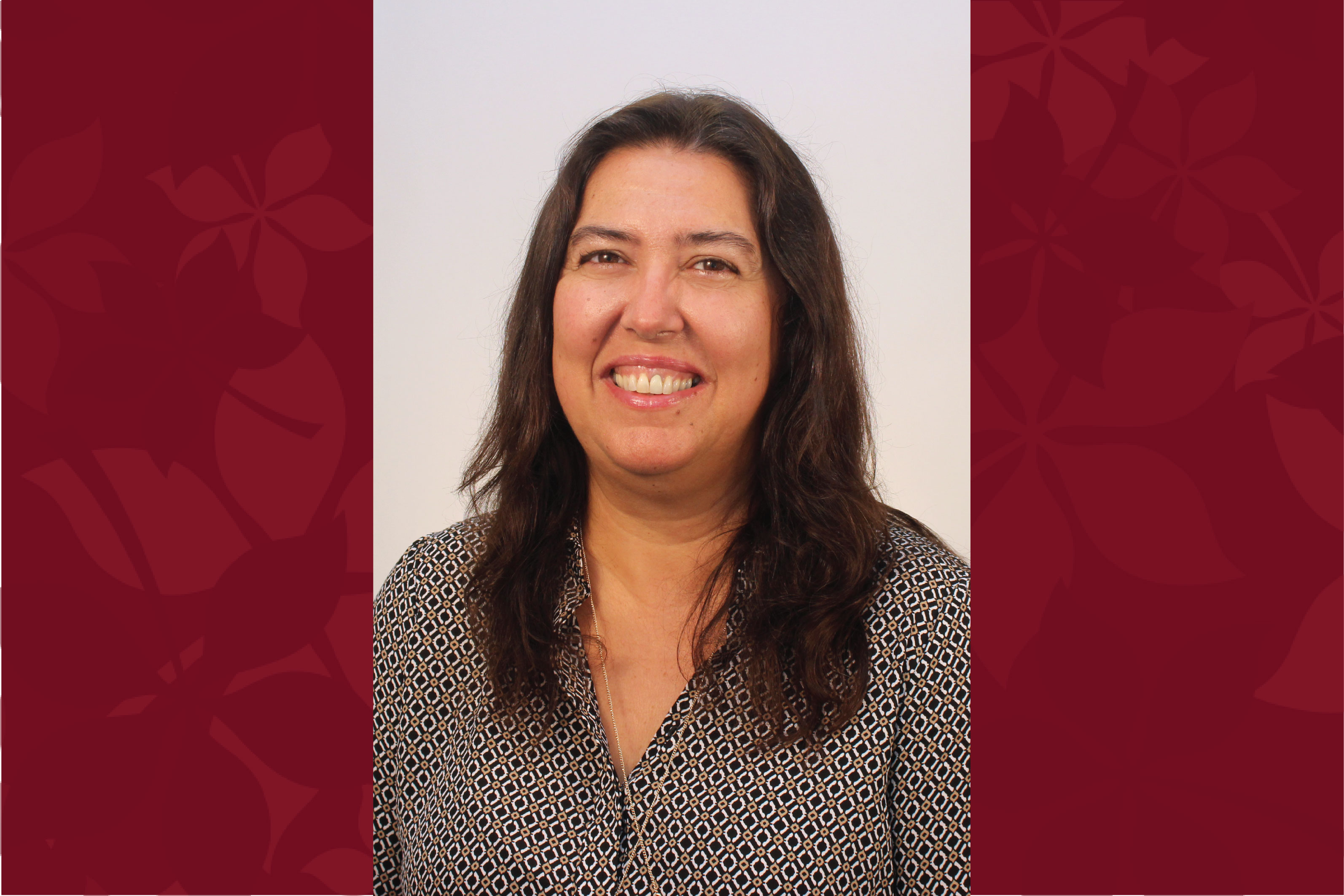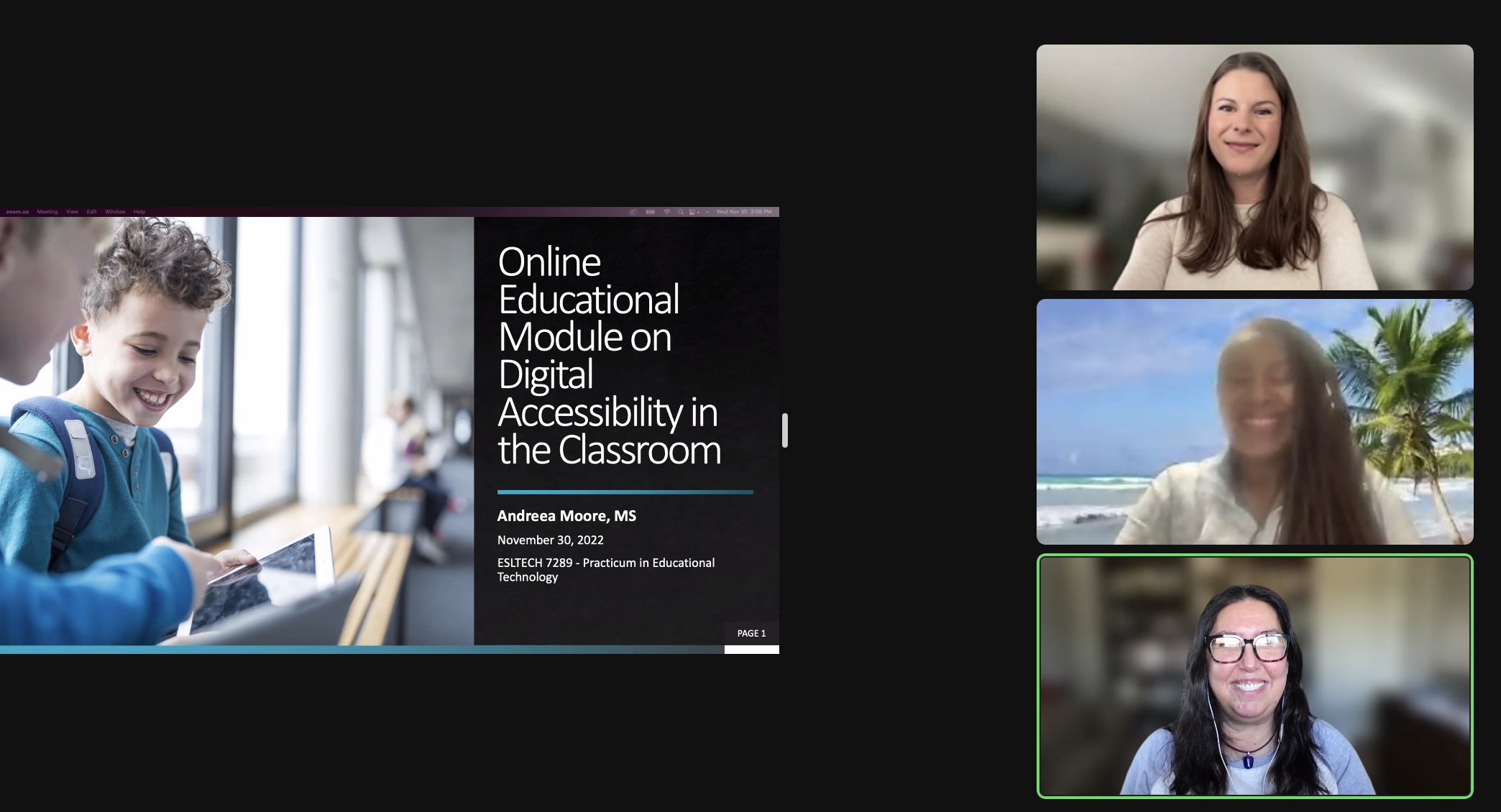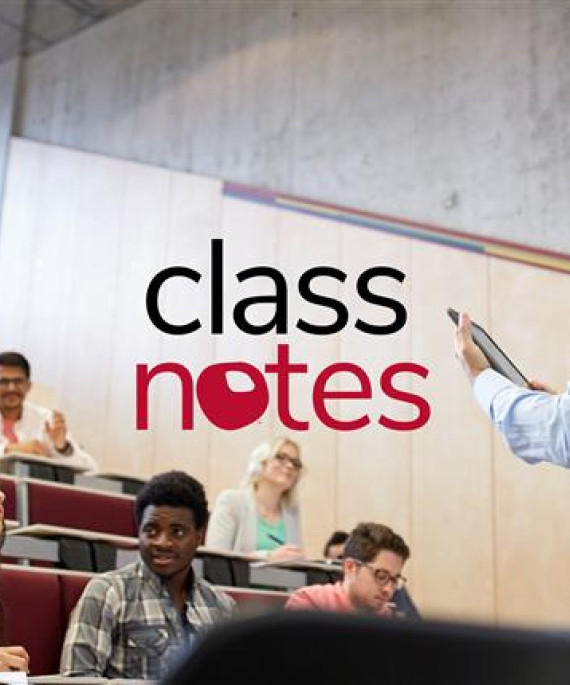
Students gain career benefits from master’s program
U.S. News and World Report released its most recent "Best Online Graduate Education Programs" rankings in late January. For the second year in a row, peers ranked the college’s Master of Learning Technologies program No. 10 in the online Educational and Instructional Media Design specialty category.
Fully online, the seven-year-old program enrolls students from across the nation. They gain professional expertise to elevate learning with technology in many settings, including education, corporate, nonprofit and government.
The streamlined curriculum is tailored for part-time and full-time students and fulfills a high-priority requirement of employers — online collaboration.
“The success of the program comes back to the students,” said Rick Voithofer, associate professor and chair of the program. “They fully engage in each course and enrich each other. We have students working on course projects that span all aspects of education. They include K-12 educators, industry professionals and higher education staff.”

Voithofer said the quality of the practicum projects, which are conducted with guidance from a faculty advisor, seems to increase each year. “Students have developed projects that enhance their current professional positions. They also build their portfolios to advance in their current jobs or seek new employment opportunities.”
To increase the program’s capacity, Tracey Stuckey, who teaches several of the courses, was elevated to clinical associate professor last year. “This has allowed her to serve as an advisor to MLT students,” Voithofer said. “Her ability has added a whole new dimension to the program, including the types of practicum projects that students develop.”
“Our students have come out of the pandemic with new skills and an even greater capacity to collaborate and learn online,” he said.
Alumna boosts career by gaining expertise in highly ranked program
Elizabeth “Liz” Trolli, who graduated last semester, became an instructional design specialist last summer in Ohio State’s Office of Interprofessional Practice and Education. Her office guides the university’s seven health sciences colleges and The Ohio State University Wexner Medical Center in providing student learning experiences with community partners.
For her practicum, conducted last autumn, Trolli created and launched the Interprofessional Community Scholars CarmenCanvas course. The online course provides an orientation and ongoing support for students throughout the Interprofessional Community Scholars Program.
The program pairs students with older adults in the Columbus community. Students work with these Community Health Mentors to improve digital literacy – using MyChart or telehealth, for example. In return, students learn about patient care and community health.
When developing the CarmenCourse, Trolli used theories and concepts learned from her degree courses to keep students engaged while creating a learning experience using sound instructional principles. “I emphasized showing students the program’s impact and why it is a valuable investment of their time,” she said.
The course has received positive feedback. “We have reduced the number of questions, concerns and anxieties of our students before they go into this learning experience,” Trolli said. “Students are more engaged and find the content a lot easier.”
Trolli said several faculty members supported and advised her while completing her practicum. She applied best practices in online learning design from the course taught by Tracey Stuckey, clinical associate professor. Trolli’s advisor, Professor Ana-Paula Correia, provided keen attention to detail that challenged Trolli to look at the course from the student’s perspective.

“Dr. Correia is an amazing resource who really wants to make sure the program is applicable to each student’s career and interests,” Trolli said, “She helped me find a practicum I could do in my new role at IPE, something that would enable me to stay within what I was doing, but also help orient and onboard me to my new position.”
“She is somebody I still go back to and say, ‘What do you think about this idea?’ She’s super approachable.”
Correia said an online degree can offer a range of benefits. “This includes flexibility, control over the pace of learning and the convenience of studying from anywhere at any time,” she said. “However, the Master of Learning Technologies degree at Ohio State offers an additional advantage. It allows students to create digital products that can be included in their portfolios, making them highly competitive in the current job market.”
“For example, in my applied instructional design class (ESLTECH 8295), students have the opportunity to create educational products focused on real-world applications and commercialization opportunities,” Correia said.

Program supports career change
Andreea Moore, ’22 MLT, is changing careers — from medical radiation physics to instructional design — using the highly ranked Master of Learning Technologies to round out her portfolio. She needed a project with impressive dimensions for her practicum project.
Moore partnered with Stuckey to create an asynchronous education module for participants in the college’s TransformED: Creative Educator Academy. The partnership with Apple provides a yearlong professional learning experience for Ohio K-12 educators to integrate digital learning into their classrooms. The module would introduce academy participants to the range of learning possibilities in a digitally enhanced classroom.
With Correia as her advisor and Stuckey as her client, Moore began by creating a needs assessment for the current academy participants. “It allowed me to better tailor the course and learning objectives to their knowledge,” Moore said.

Before presenting each project iteration to Stuckey, Correia met with Moore, reviewed her work and provided constructive feedback. “This allowed me to feel more confident when I presented my work to Dr. Tray (Tracey),” Moore said. “Dr. Ana-Paula taught me the importance of a consistent look and feel within a learning project. Consistency creates harmony and balance and a sense of cohesiveness. It reduces cognitive load for users.”
For an effective module, Moore drew on principles and tactics learned from Stuckey’s ESLTECH 6278: Introduction to Instructional Design course. “The project allowed me to gain experience in educational technology tools like the Articulate 360 – Rise application,” she said, “as well as knowledge about the field of instructional design and its learning principles.”

The entire practicum was designed to mimic the process an instructional designer would go through to complete a project, from a kickoff meeting where expectations were laid out, to weekly progress meetings, multiple project iterations and a final presentation and handoff meeting, Moore said.
“I really appreciated the program for its flexibility. Synchronous courses allowed students to connect and get to know each other in real time, along with the instructor. Also, the faculty were very generous in availability through virtual office hours or email. You never felt like you were stuck on a remote island, even though the program is fully online.”




